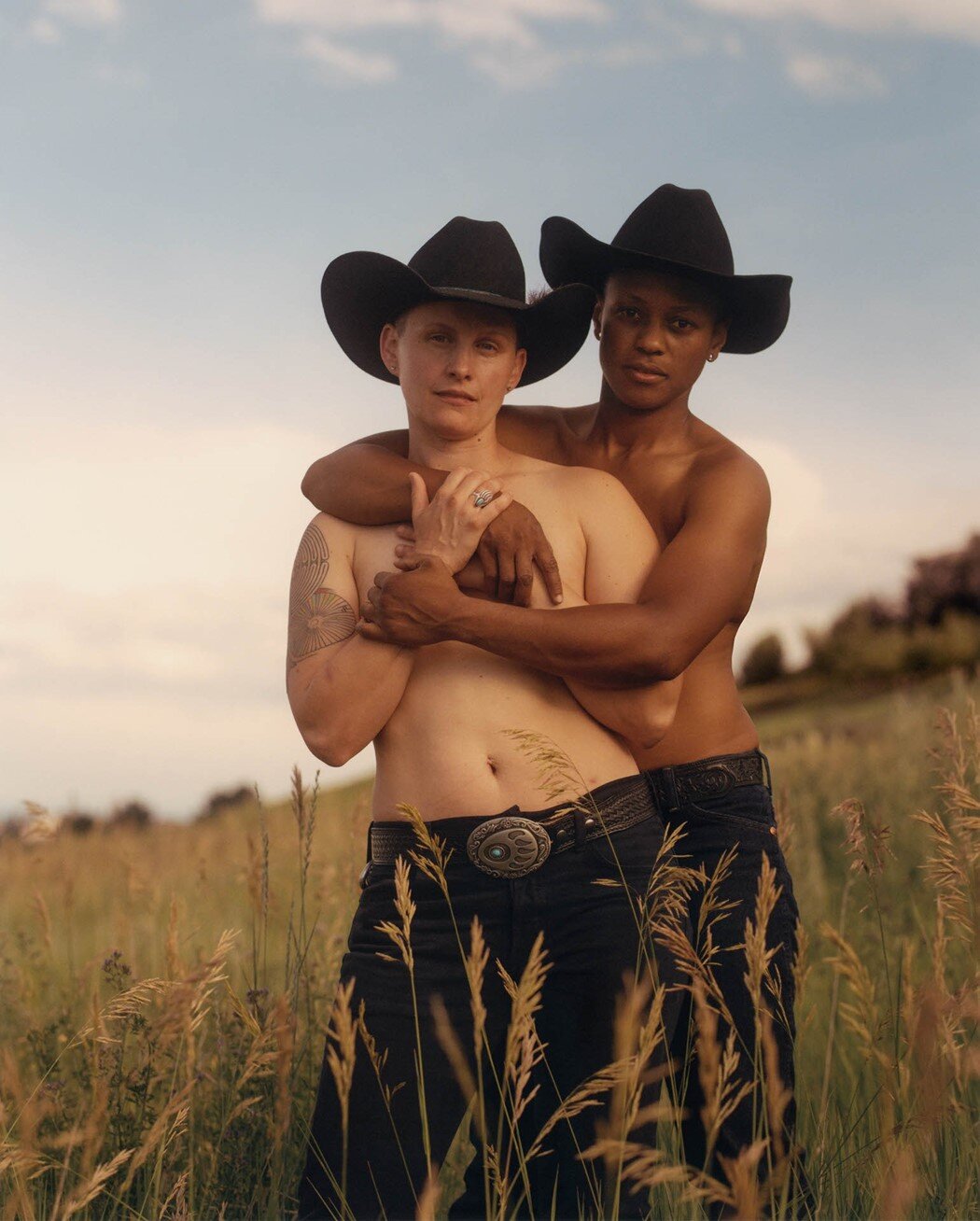The Queer Cowboys of Luke Gilford’s ‘National Anthem’
Words by Maya Bewley
The word ‘cowboy’ seems to conjure up images of hegemonic masculinity and conservative America; rough, violent shootouts among the rural plains of dusty hills and small towns. Yet in his 2020 ‘National Anthem’, Luke Gilford captures a community that rejects the burgeoning polarisation of Trump’s America. Since 1976, the International Gay Rodeo Association have provided inclusive rodeos that embrace gay culture while celebrating the traditional western lifestyle.
Typical events such as ‘Bull Riding’ and ‘Barrel Racing’, are interspersed with those such as ‘Wild drag racing’; involving someone dressed in drag attempting to mount an ox. ‘National Anthem’ is a stunning gaze into the hidden world of queer rodeo, through tender portraits of the people who make it.
‘National Anthem’ by Luke Gilford
Gilford’s own background wasn’t far from the spectacle of rodeo. As a child he often joined his father, a member of the Professional Rodeo Cowboys Association, across Colorado in awe of the vivid machismo visuals. He speaks with nostalgia for the ‘leather denim and dirt’ and the ‘people and animals illuminated by golden light’ [1].
In some ways the performative nature of typical rodeos isn’t too dissimilar from the extravaganza of drag. However, Gilford’s introduction to queer rodeo would come later in life, as he describes stumbling upon the International Gay Rodeo Association at a pride event in San Francisco. What followed was a 4 year long journey into the heart of America’s western states, making efforts to fully connect with the community as he photographed them.
‘A Couple at the Rodeo in Arizona’
Recalling his first queer rodeo, Gilford treasures the ‘electric charge of belonging and acceptance’[2] that he no doubt seeks to replicate in his photography. No subject seems out-of-place, each confronts the camera with a sense of unwavering dignity. There is something moving about this address, that forces the viewer to meet eye to eye with the subject.
Unlike other representations of Queer Cowboys in popular culture (think the surreal compositions of Delmas Howe’s Greek-inspired ‘Rodeo Pantheon’, or the ever entrenched ‘Brokeback Mountain’), we are reminded through their stare that rural queerness is not merely fantasy, this is a real intersection of people. And as we are ‘allowed’ a gaze into the portrait, we are gazed back upon: a moment both intimate and unsettling.
One of the most striking photos from ‘National Anthem’ is of Priscilla Toya Bouvier, who holds the title of Miss IGRA 2019. She stands opulent and dazzling, staring intently underneath a dusky Coloradan sunset. Again, we are made to feel as though we have shared something profound, and this closeness can also be attributed to Gilford’s commitment in building a relationship with those photographed.
He relays how Priscilla ‘grew up in a conservative family in New Mexico and spent the majority of her life closeted’, and that the rodeo presented her with a scholarship for New Mexico State University (she now lives on a ranch with her partner and children) [3]. Though he remains fixed behind the camera, there’s a covert reflection of trust in Gilford, whose presence echoes throughout the shot.
Priscilla Toya Bouvier Miss IGRA 2019 in Colorado
The tender beauty of intimacy is mirrored in another photo of two cowboys at a rodeo. There is a hazy warmth as one cowboy lifts up the shirt to touch the back of another. Though turned away from the camera, these fleeting moments of gentleness (seldom seen in heteronormative cowboy culture) are equally pertinent in consolidating the sense of freedom in queer spaces.
Attendees often laud the ability to express queer love openly, but there’s also a poignancy to the fact that, as Gilford points out, the arenas where queer rodeos take place are the same for mainstream rodeos. ‘’There is a subversion of power, even if it’s only for a weekend, to be co-opting this space and making it our own.’’[4]. Nonetheless, the allure of these raw emotions bleed into the soft, diffused colours of the photos. Shot on film then developed in darkroom, they retain a subtle affection that defines Gilford’s style.
‘A Couple Stood Together at the Rodeo’
‘National Anthem’ shows that there is not one singular way to be queer or rural. Its contents document the diversity of a community who reiterate the word ‘cowboy’ across race, gender and sexuality. In an ever-changing political climate, the IGRA, as Gilford puts it, demonstrates that people are not ‘dichotomies’. Their self-proclaimed ‘family atmosphere’ that operates on an everyone-welcome style, characterises the spirit of these photos. ‘It’s not a whole lot different from the straight rodeo world. But it’s awesome because your accepted and included’. [5]
‘Untitled’





